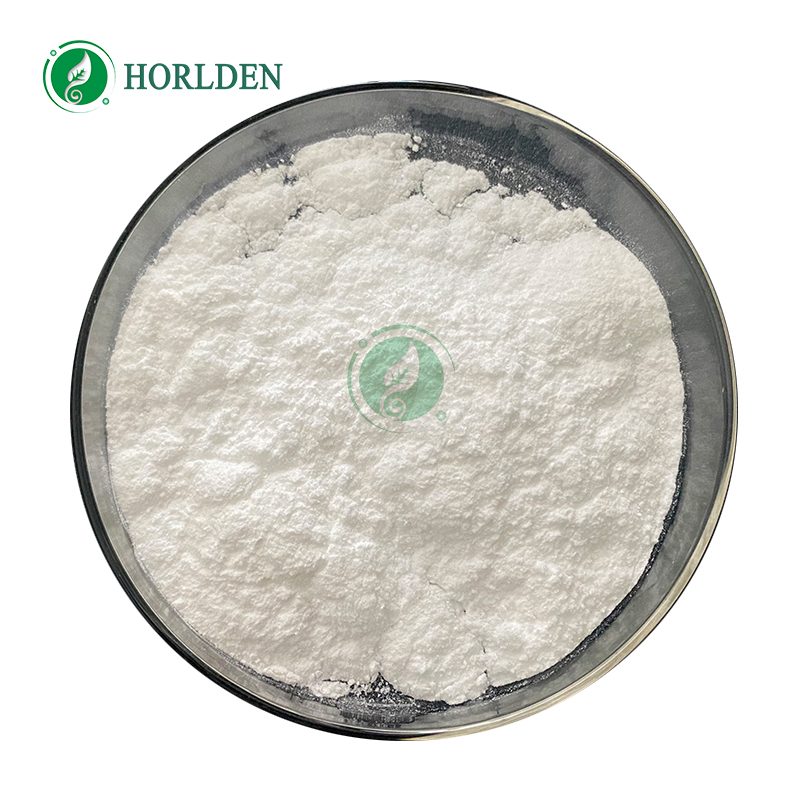-
Categories
-
Pharmaceutical Intermediates
-
Active Pharmaceutical Ingredients
-
Food Additives
- Industrial Coatings
- Agrochemicals
- Dyes and Pigments
- Surfactant
- Flavors and Fragrances
- Chemical Reagents
- Catalyst and Auxiliary
- Natural Products
- Inorganic Chemistry
-
Organic Chemistry
-
Biochemical Engineering
- Analytical Chemistry
-
Cosmetic Ingredient
- Water Treatment Chemical
-
Pharmaceutical Intermediates
Promotion
ECHEMI Mall
Wholesale
Weekly Price
Exhibition
News
-
Trade Service
Instruction of N-[4-[(3-Chloro-4-fluorophenyl)amino]-7-[[(3S)-tetrahydro-3-furanyl]oxy]-6-quinazolinyl]-4-(dimethylamino)-2-butenamide: A Comprehensive Overview
N-[4-[(3-Chloro-4-fluorophenyl)amino]-7-[[(3S)-tetrahydro-3-furanyl]oxy]-6-quinazolinyl]-4-(dimethylamino)-2-butenamide, also known as compound XY-261, is a potent and selective inhibitor of the NLRP3 inflammasome.
This molecule has shown promise in preclinical studies as a potential treatment for a variety of inflammatory diseases, including atherosclerosis, Alzheimer's disease, and nonalcoholic steatohepatitis (NASH).
The chemical structure of N-[4-[(3-Chloro-4-fluorophenyl)amino]-7-[[(3S)-tetrahydro-3-furanyl]oxy]-6-quinazolinyl]-4-(dimethylamino)-2-butenamide is quite complex, consisting of a combination of aromatic and aliphatic rings, as well as several functional groups.
The compound contains a phenyl ring with a fluorine and chlorine atom attached to it, which are believed to play a role in the compound's binding to the NLRP3 receptor.
The quinazoline ring system is also thought to be important for the compound's activity, as it has been shown to inhibit the NLRP3 inflammasome with high potency and selectivity.
The synthesis of N-[4-[(3-Chloro-4-fluorophenyl)amino]-7-[[(3S)-tetrahydro-3-furanyl]oxy]-6-quinazolinyl]-4-(dimethylamino)-2-butenamide involves a multi-step synthesis process that requires the preparation of several intermediate compounds.
The process begins with the synthesis of a phenyl-substituted succinic acid, which is then converted into a phenyl-substituted α,ω-bis(alkoxy)acetic acid.
This intermediate is then transformed into a phenyl-substituted γ-butyrolactone, which is followed by the conversion of the γ-butyrolactone into a phenyl-substituted 4-(dimethylamino)-2-butenamide.
The final step in the synthesis involves the coupling of the 4-(dimethylamino)-2-butenamide with the 7-[[(3S)-tetrahydro-3-furanyl]oxy]-6-quinazolinyl alcohol.
The total synthesis of N-[4-[(3-Chloro-4-fluorophenyl)amino]-7-[[(3S)-tetrahydro-3-furanyl]oxy]-6-quinazolinyl]-4-(dimethylamino)-2-butenamide requires approximately 12 steps and can be accomplished in a variety of ways, depending on the availability of starting materials and the desired yield.
The physical properties of N-[4-[(3-Chloro-4-fluorophenyl)amino]-7-[[(3S)-tetrahydro-3-furanyl]oxy]-6-quinazolinyl]-4-(dimethylamino)-2-butenamide are summarized in Table 1.
Table 1: Physical properties of N-[4-[(







